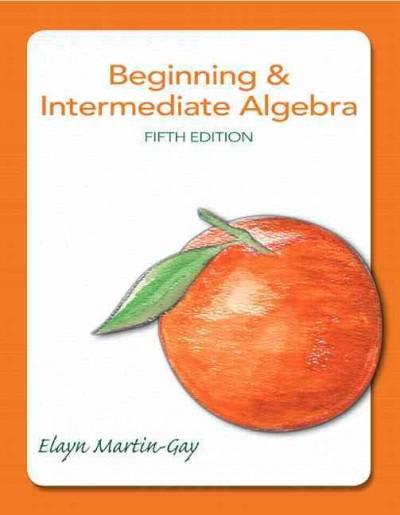Question
A companion who works in a major city claims two vehicles, one little and one huge. 3/4 of the time he drives the little vehicle
A companion who works in a major city claims two vehicles, one little and one huge. 3/4 of the time he drives the little vehicle to work, and one-fourth of the time he takes the huge vehicle. On the off chance that he takes the little vehicle, he typically experiences little difficulty leaving as is grinding away on schedule with likelihood 0.8. In the event that he takes the enormous vehicle, he is on schedule to work with likelihood 0.5. Given that he was grinding away on schedule on a specific morning, what is the likelihood that he drove the huge vehicle? (Offer the response to three decimal spots.)
A container around your work area contains fifteen dark, seven red, ten yellow, and fourgreen jellybeans. You pick a jellybean without looking.
=21=
Discover the likelihood that it is red or yellow.
Compose the likelihood as a decreased division.
Compose the likelihood as a percent, adjusted to the closest 1%.
%
The mean load of a fire subterranean insect specialist is 3.11 mg with a standard deviation of 0.49 mg. Allow us to expect that the heaviness of any fire insect is autonomous from the heaviness of some other fire insect. An ordinary fire subterranean insect province contains 240,000 fire subterranean insect laborers. Assume we take a gander at the heaviness of every insect in a normal fire insect settlement. Leave M alone the arbitrary variable addressing the mean load of all the specialist insects in the province in mg. Let T = the irregular variable addressing the amount of the loads of all the laborer subterranean insects in the province in mg.
On the off chance that TK is T estimated in grams (utilize 1g = 1000mg.), what is the standard deviation of TK?
What is the surmised likelihood that T is more prominent than 747000?
What is the standard deviation of M?
What is the rough likelihood M is somewhere in the range of 3.111 and 3.112?
What is the rough likelihood that T is inside 2 standard deviations of its normal worth?
In roulette, the numbers from 1 to 36 are equally disseminated among red and dark. A player who bets $1 on dark wins $1 (and gets the $1 bet back) if the ball stops on dark; otherwise (if the ball lands on red, 0, or 00), the $1 bet is lost. One choice in a roulette game is to bet$ 3on red. In the event that the ball lands on red, you will keep the $ 3you paid to play the game, and you are awarded$4.If the ball lands somewhere else, you are awarded nothing, and the$ 3 that you bet is gathered. What is the normal estimation of the game?
Step by Step Solution
There are 3 Steps involved in it
Step: 1

Get Instant Access to Expert-Tailored Solutions
See step-by-step solutions with expert insights and AI powered tools for academic success
Step: 2

Step: 3

Ace Your Homework with AI
Get the answers you need in no time with our AI-driven, step-by-step assistance
Get Started


